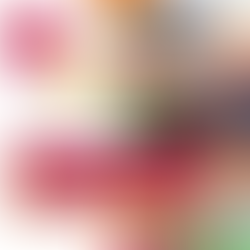Self-Portrait Painting and Identity Affirmation with the Help of Stories
- Madison Reading Project

- Oct 5, 2021
- 3 min read
Updated: Oct 20, 2021
Storytelling is a powerful tool to facilitate discussions and connections between children and their peers. Thoughtfully chosen books can even help children better understand themselves and the world around them.

We believe that discussions about skin tone and racial identity are hugely important and meaningful topics that children must engage with from an early age. Helping kids to think about these topics can lead to healthier senses of self and others. The following books support children and adults in either classroom or home settings discussing these topics.
Book Recommendations:
Honeysmoke: A Story of Finding Your Color by Monique Fields (Author), Yesenia Moises (Illustrator)
Our Skin: A First Conversation About Race by Megan Madison (Author), Jessica Ralli (Author), Isabel Roxas (Illustrator)
Skin Again by bell hooks (Author), Chris Raschka (Illustrator)
Sulwe by Lupita Nyong'o (Author), Vashti Harrison (Illustrator)
Antiracist Baby by Ibram X. Kendi (Author), Ashley Lukashevsky (Illustrator)
Different Differenter: An Activity Book About Skin Color by Jyoti Gupta (Author), Tarrannum Pasricha (Illustrator)
Each of these books would be a great teaching and learning tool for this self-portrait activity. Through discussion, color mixing and exploration, children can strengthen their own identities by creating portraits of themselves and better understanding the true uniqueness of skin tone and racial identity.
Supplies:
Paint (red, yellow, blue, black, white)
Paintbrushes
Mixing tray or paper plates
Paper (for younger kids, you may want to draw the head/shoulders in advance)
Read: In Honeysmoke: A Story About Finding Your Color, a young biracial girl wants to find the perfect color that represents her skin tone. She ultimately chooses her own and creates a new word to define her identity: honeysmoke. This is an empowering story that encourages children to create their own self identity.
Before, during and after reading, we suggest asking a variety of open-ended questions that allow children to make predictions, inferences, and connections and also explore possible outcomes and messages. Check out this blog post for some questioning ideas.
Create: After reading and discussing, explain to children that everyone will have their own opportunity to create a color that matches their skin tone and use it to paint a self portrait. Students will need time to color mix and explore to find their skin tone. Before mixing, encourage kids to study their own skin - notice how it may be different shades and textures on different parts of the body. Remind them that no two colors are the same. This activity kit from the Honeysmoke author/publisher team is an excellent resource to support learning.
Have students use red, yellow and blue to create a shade of brown. Children can then add different colors to lighten and darken their original shade to find their skin tone.
Once the students have found a shade they identify with, they can begin painting their self portrait.
When the paint dries, they can add additional details like eyes, a nose, mouth, hair, freckles, and more.
While the paint is drying, you can assist kids in brainstorming color words they might use to describe their skin. We recommend using this resource for background knowledge and examples of color descriptors.
Encourage students to select words to describe their skin. Once decided, they can write their color name below their self portrait.
We recommend ending the lesson by hanging up all of the self portraits and discussing the experience with the children.
Continuing to do activities like this with kids can have profound effects on their understanding of racial identity, and sense of belonging and identity affirmation. For more book recommendations, check out our Bookshop page.


















































